What I read in 2022
A habit that I have had for a few years is that I try to focus each year on some particular goal. In the past years these have been things such as learning to cook well or deeply understanding how to invest. For 2022, I decided to focus the year on reading. Concretely, I decided to read a book a week.
Following the tradition of the past years, this blog post summarizes all books I have read this year. This thus amounts to 52 books for the 52 weeks of the year.
In case this post is too long for you, and you would rather just look at my favorite books of the year, I marked them with a ☆:
- The Soul of a New Machine (2.)
- Thinking in Systems (10.)
- Crafting Interpreters (20.)
- A Gentleman in Moscow (24.)
- The Design of Everyday Things (29.)
- CODE (43.)
Feel free to directly skip to these.
1. The Brain: The Story of You
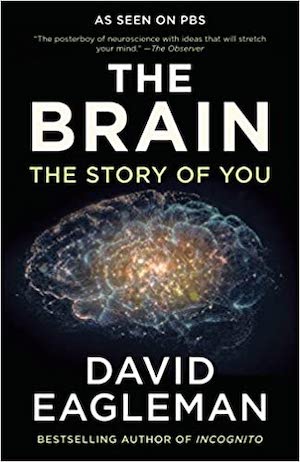
The Brain is a pop-scientific book about neuroscience. The author is a neuroscience professor at Stanford, and it shows: He is able to explain the ideas really well and can very well explain why certain research areas are important. The book is a fairly easy read but nevertheless gives a good overview of what neuroscience is about.
2. The Soul of a New Machine ☆

The Soul of a New Machine was not just one of my favorite books of the year but also of all time, and I really did not see it coming. The descriptions generally attached to it sound fairly boring. I mostly started to read the book because I kept seeing it as a recommendation and because it won the 1982 Pulitzer Prize for Nonfiction.
The book tells the story of a group of engineers in a company building a new computer in the 1980s. Initially I found it hard to get into the book. I had never heard of the company (Data General) nor the computer it was building (Eclipse MV/8000), so I did not feel invested in the story. However, what the book really is about is the culture of a special workplace and about how people get motivated.
While reading the book, my initial sentiment about the book changed. It was fascinating to see how the project came to be, how different people felt like it was “their” project, and how people got incredibly motivated about it without any extrinsic rewards being given to them. I often had to think back about how projects happen at my work place and how certain environments can either really spur your intrinsic motivation or completely kill it.
Additionally to the contents of the book being fascinating, the author’s writing style is also superb. I am not surprised that it won a Pulitzer Prize. Since I have read the book, I have recommended it to lots of people, though always with a big disclaimer similar to my book description here.
3. Modern Dating
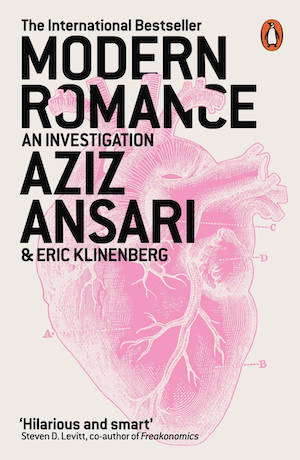
Aziz Ansari is a well-known Hollywood actor that teamed up with a social scientist to write a book about dating. The book is both super interesting and written in a funny way. Ansari discusses how dating changed over time and how it differs across cultures, backing up things with data along the way.
4. The Cafe on the Edge of the World
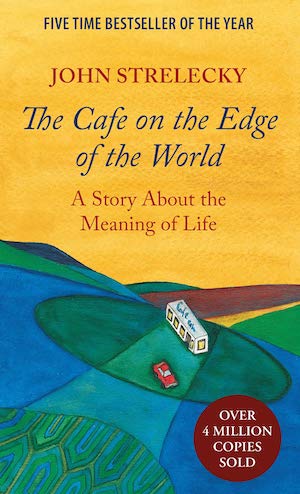
The Cafe on the Edge of the World is a book about the meaning of life. It wants to go deep on that topic, but to me the dialogues were too unnatural and scripted. Every sentence is foreseeable and feels too crude. Just the desire to discuss important questions at depth is just not enough to actually produce deep insights.
5. The Pragmatic Programmer
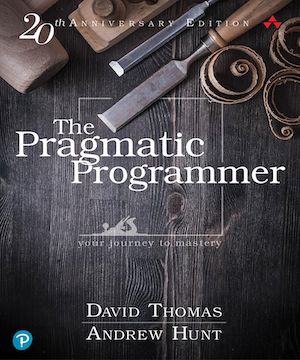
The Pragmatic Programmer is a collection of software engineering advice. It is a popular book and over the years I have seen it recommended in lots of places. While it is not a bad book, it does cover fairly basic material. I now feel like this is something that people in university might want to read, but for people that worked as a software engineer for a few years most stuff should be pretty obvious. If one wants a really good overview of the craft of software engineering, I would instead recommend the Software Engineering at Google book.
Finally I found myself disagreeing with some of the book’s contents. For example, one of the authors claimed they stopped writing tests for their code because after 30 years of writing code they now write it in a testable way by default, and thus don’t feel the need to write tests. That’s something that might work when writing code solely for yourself but that would be a terrible idea if you really want to create software at scale.
6. The Goal
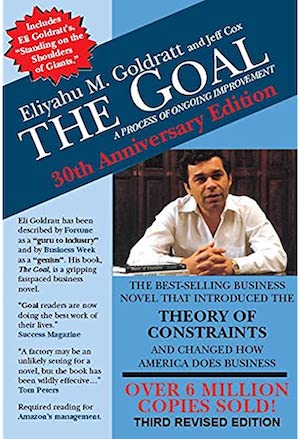
The Goal is a book about management, written in the form of a story. The main character, Alex Rogo, is managing a failing manufacturing plant. At the same time, his marriage is in deep trouble. Somehow he has to fix things before they spiral out of control.
The book aims to teach concepts based on this story. The fundamental idea is that it is important to keep the overall goal you are pursuing in mind. Activities that do not contribute to that overall goal, like robots in a factory that are fancy but do not actually increase output, are not productive. This leads to the Theory of Constraints.
While the concepts taught are not too complex, they are still really powerful and I ended up thinking about the “fancy robots” analogy quite a lot at work. I also really enjoyed the way the concepts were taught through an entertaining story. I would absolutely recommend this book to people wanting to tackle problems in more systematic ways.
7. How to Stop Worrying and Start Living
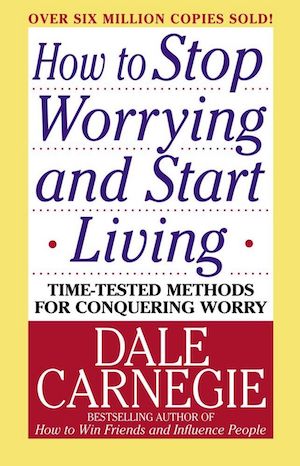
Dale Carnegie is primarily known for How to Find Friends and Influence People, but he also wrote a second popular book: How to Stop Worrying and Start Living. The book consists of loosely connected essays about why one should stop worrying about things and how to do that.
While reducing stress is an important topic and the advice is generally sensible, I did not find it particularly helpful. Maybe reading about the topic does just not make a huge difference since it is often fairly clear what to but the hard part is actually following that advice.
8. The Rules of Love
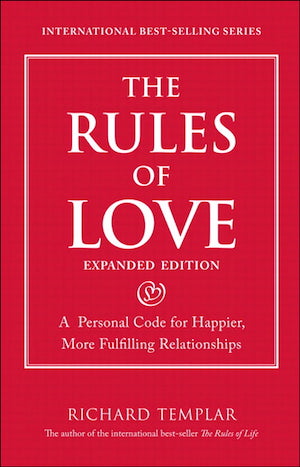
The Rules of Love is a collection of rules for happy relationships. These include not just relationships to your partner but also to friends, parents, kids and more. Most of the rules are common sense, some are good to read about in order to call them out more explicitly, and a few I found debatable.
All in all it was a good read. It was not a book that completely changed the way I think about things but I am still glad I read it .
9. The Blue Zones
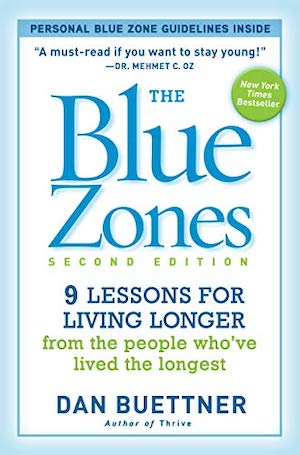
This was a book I had been wanting to read for a really long time. There are a few areas on Earth where people have a significantly higher life expectancy. These are called the blue zones, and have an especially high number of people living to the age of 100 and more. This observation has always been fascinating to me.
The book explores those regions. It covers questions, such as what habits people have, what kind of food do they eat, or how do their daily lives look like. It is certainly an interesting read but I still ended up being disappointed by the book. A lot of the content is anecdotal and in the form of a travel journey, and less about actual scientific evidence about why certain things help.
10. Thinking in Systems ☆

Thinking in Systems is a book that got recommended to me a few times, and that has a bit of a cult following in tech. Whenever I tried to read descriptions of it, I could never really figure out what it is about. I still ended up reading it and it became one of my favorite reads of the year. I will try to describe what it is about, but in case it seems too abstract, I recommend that you just go ahead and read it.
A lot of times when we feel people do not act the right way, we blame it on personal traits like incompetence or greed. However, people might act these ways because they are part of a larger system with certain incentives and properties. A system is a collection of elements that interact with each other with respect to a goal. Thinking in Systems describes bottom-up how to analyze such systems rigorously.
By thinking in systems, we move away from “person X acted in a bad way” towards “person X is part of a system with undesirable traits Y and Z, and here’s what we could do about those”. That’s a much more constructive and systematic way of tackling issues.
All in all, I absolutely recommend the book and have to say that it really changed the way I think about a lot of things.
11. Liar’s Poker
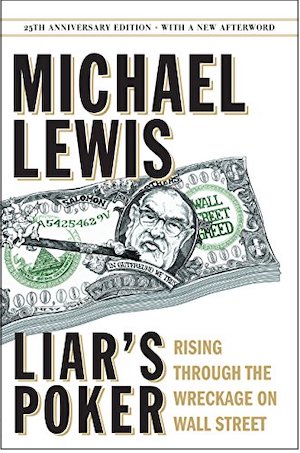
Michael Lewis is one of my favorite authors, with Flash Boys and The Big Short being some of my favorite books. Before Lewis became a writer, he used to work on Wall Street. Liar’s Poker is an autobiographical book about this time.
It is a deeply fascinating book. Lewis’ life story is super interesting. To give just one example: He ended up getting his first Wall Street job because he attended a banquet by the British Queen where he got to meet the wife of a managing director of Salomon Brothers. What makes the book so great are not just his stories, but also how sharply he analyzes the environment he is in, and how he keeps rising in it even though he evidently does not enjoy being there.
12. The Vaccine: Inside the Race to Conquer the COVID-19 Pandemic

Ugur Sahin and Özlem Türeci are two German scientists of Turkish descent whose company, BioNTech, created the first COVID-19 vaccine. The book tells the story of their lives and how the vaccine came to be.
Sahin and Türeci have been researching in the field of RNA for many years. They are both professors and sold their first company for 400 million euros, after which they founded their next company, BioNTech. When the first news of COVID-19 came out, they re-centered the company around racing towards a vaccine. Eventually, they partnered with Pfizer to globally distributed the vaccine. Today, many know the vaccine as the “Pfizer vaccine”, even though it was created by BioNTech. However, the vaccine can really be attributed to Sahin’s and Türeci’s intellect and their attentiveness, which turned them into billionaires in 2021.
I really enjoyed the book. I generally like books that explain how something came to be, and this one gives great insights into how the vaccine works, into the lives of superb scientists and into how they organized a great research team. After reading the book, Sahin and Türeci seem like superheroes to me. It is crazy how efficient they are and what a great team they make. This 2020 article from the New York Times also gives a good overview of the story.
13. Zero to One
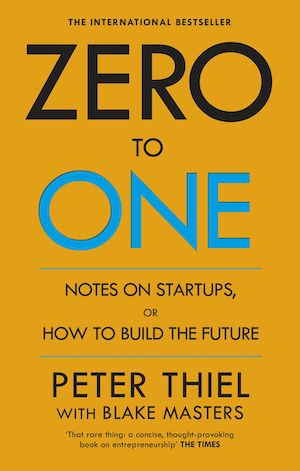
In Zero to One, Peter Thiel provides advice on how to create and run a startup. The book is an easy read but yet provides really valuable advice. I think a lot of the advice is not just helpful for creating actual startups but also for people that work on more uncertain projects in large, established companies.
14. High Output Management
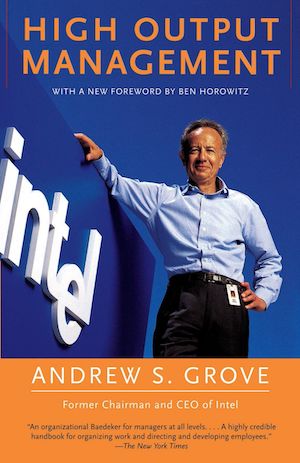
High Output Management is a book from Andy Grove, one of the Intel co-founders, on managing people. It is a classic book in the tech industry that is recommended in lots of places. The book discusses topics like how to evaluate managers, how to run meetings efficiently and how to compensate people. It gives a very thorough overview of such management topics.
I quite liked the book. What made it an especially good read is that it is written by Andy Grove. The fact that he co-founded Intel and turned it into a huge company gives a lot of credit to the advice he provides in the book.
15. Exercised
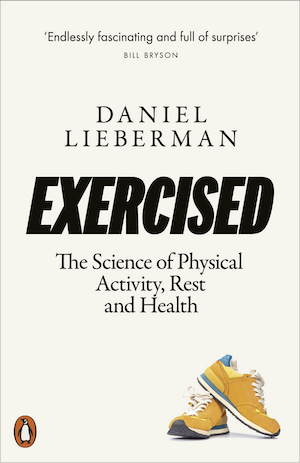
Daniel Liebermann is a Harvard professor in biology. In Exercised, he writes about the science of why humans exercise and discusses what we know about how to exercise well. If one thinks about it, it is quite fascinating that humans exercise at all. There are no other animals that do this as systematically as humans. Liebermann discusses how this came to be.
The book is incredibly well written and gave me a new perspective on lots of things. To give just one example, I never thought of as humans being especially gifted physically. Other animals seemed stronger or faster, and I always thought that humans purely established themselves as dominant on Earth because of their intellect. However, it turns out that this is not really true, as there are no other animals other size that have as much physical endurance as we do. This is actually an enormous physical advantage, as it was really helpful for humans when hunting.
16. #noprojects
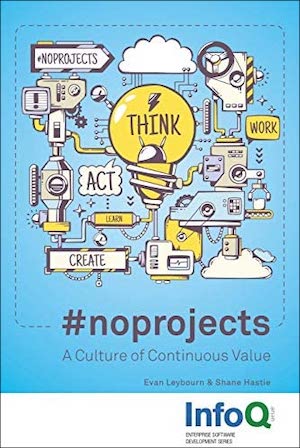
#noprojects is a book about how to plan work. Instead of thinking in projects with a clear beginning and end, the book proposes to think about work in a more continuous form. The general idea makes sense to me and is well explained. However, I think that the book could be significantly compressed to be a long essay. A lot of the pages just seem like filler content.
17. How to Lead Smart People
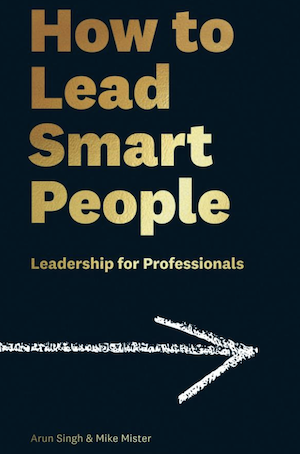
How to Lead Smart People is a book that talks about how to lead projects and interact with people at work. Each topic is discussed on just a few pages, in a rather short and information-dense way.
The advice is sensible and I took some things away from this book. However, I feel like with this brief presentation of topics, it is just too easy for me to forget too much of the content after a while.
18. Queen’s Gambit
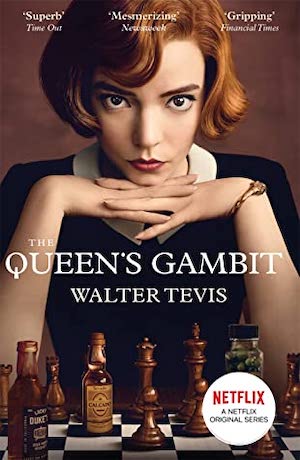
You probably heard about the Netflix show Queen’s Gambit. The show is based on this book, which tells the story of an orphan who is a chess prodigy. In the course of the book she rises in the world of chess, against all odds.
The book is entertaining. Most of it is fairly foreseeable, but it is still a really enjoyable read. I also quite liked the writing style.
19. The Mythical Man Month
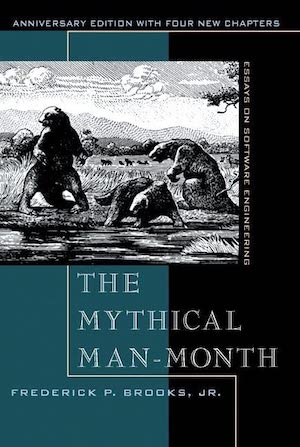
The Mythical Man Month is a classical software engineering book. Adding people to projects does not decrease the time to project completion proportionally. Instead, adding people adds communication overhead, and there is a point where it can actually slow down projects.
The book discusses this and other phenomena. It was a good read, and I found it really worthwhile to understand that having more people does not always equate to more progress.
20. Crafting Interpreters ☆
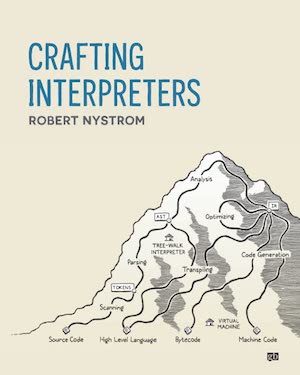
I had been wanting to learn about writing compilers for a long time. There is something magical about how a computer is able to translate and execute commands in a language defined by humans. Somehow I never got to learn about how compilers really work deep down, and I figured this year it was time to make up on that.
Crafting Interpreters is a book that explains how to build interpreters and compilers. Two interpreters are actually written in the book and the full code is produced step by step over the chapters. Reading the book gets you to a state where you fully understand how these interpreters work.
The book feels like a piece of art to me. Everything is incredibly well explained and the code produced is beautiful. Additionally, the author created lots of illustrations that are really artfully done.
21. Radical Candor
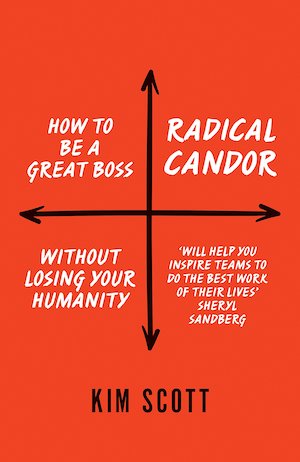
When giving feedback you want to do it with candor while still saying something meaningful. Radical Candor is a book that provides a framework for this. Advice is broken up in two dimensions: how to the point it is (radical) and with how much empathy it is presented (candor). This is illustrated with many examples from the author’s long career.
I found the book to be a good read and I feel like I learned valuable things from it.
22. Turn the Ship Around!
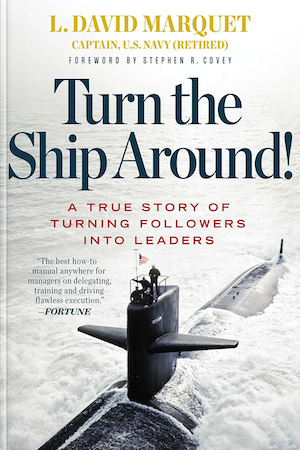
Turn the Ship Around’s author David Marquet spent his career in the Navy, which is an environment in which people generally follow rules but do not act by initiative that much. This works in some situations, but can actually be pretty problematic in others, so Marquet tried to teach people more independent leadership skills.
The book gives advice in that regard. It is a fairly easy read, but I feel like it could have been a long essay instead of a book.
23. Beyond Collaboration Overload
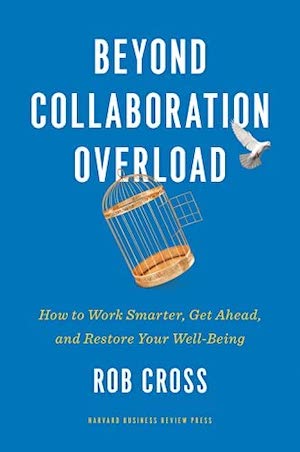
We generally consider collaborations to be a good thing. However, they come at a cost, as they add complexity in terms of communication and mental capacity, and take time. This is especially the case in an ever increasingly connected world.
The author offers a new framework on how to think about collaborations and how to design to be effective. I think I took some valuable lessons away from the book, as it made me completely rethink collaborations.
24. A Gentleman in Moscow ☆
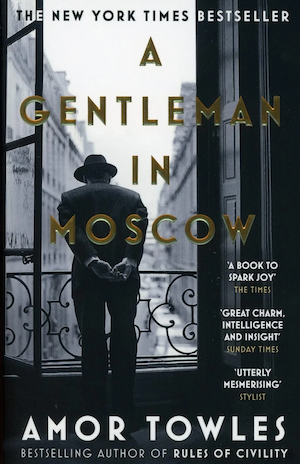
A Gentleman in Moscow is a beautifully written novel about Russia after the Bolshevik Revolution. The main character, called The Count, is a Russian nobleman. After the Russian revolution, he loses all his property and has to spend his remaining life inside a hotel building, without being allowed to leave it at all. As the years pass, the reader gets to see how life for The Count goes on and how Moscow changes over the years.
The book is superbly written and a real joy to read. The Count has to be one of my favorite novel characters ever – it is fun to follow his eloquent musings and inspiring to see someone so at ease in a difficult situation.
25. Freakonomics
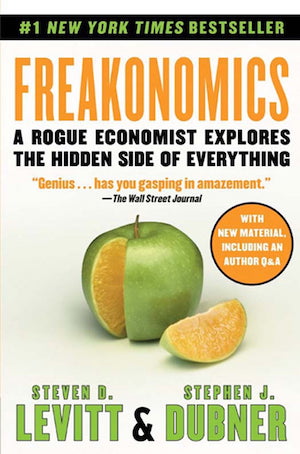
Steven Levitt is an economist that likes to ask interesting questions that can be answered with data and economics. These include questions such as: Why do drug dealers usually live with their parents? How much does it matter where we grow up? Together with Stephen Dubner, a New York Times journalist, Levitt tries to answer such questions in the book.
I loved how creative the questions and analyses were. Picking good questions should be more valued in our world. I would absolutely recommend the book to anyone that finds it fun to follow analyses of such topics.
26. A Three Dog Problem
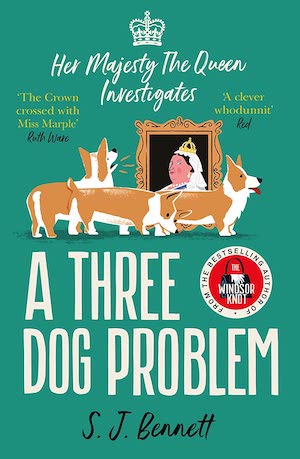
A Three Dog Problem is a light-hearted, obviously fictitious, crime novel. A murder happens at Buckingham Palace. The Queen ends up investigating the case, just aided by her corgis. It was a fun and easy read.
27. Peopleware: Productive Projects and Teams

In Peopleware, the people aspects of software engineering are discussed. The authors claim that people are often incorrectly seen like exchangeable software modules, ignoring that people have different strengths and needs. The book gives a lot of advice in this area, but also discusses more general topics, such as how to design good work environments.
I think it was worth reading the book for a thorough discussion of some of these topics. Others felt fairly obvious to me – I think it is well-known by now that having a good work place is important for productivity and well-being.
28. The Art of War
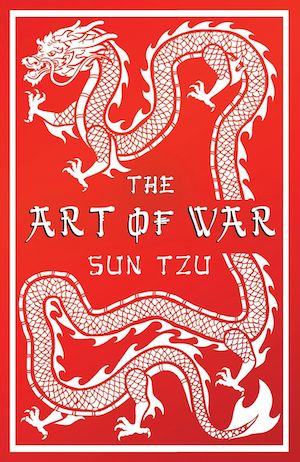
The Art of War is an ancient Chinese book on military strategies. It is several thousand years old, but has become a cult book because a lot of the advice is more generally applicable when strategic thinking is required.
It was fascinating to read. However, I did not find it that easy to take things away from the book. Since you always have to translate from the military setting to more general ideas, it takes a lot of re-reading to understand the content well.
29. The Design of Everyday Things ☆
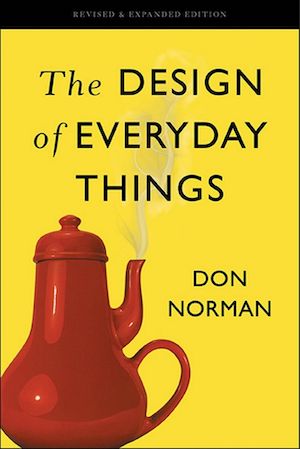
In The Design of Everyday Things, author discusses how every day items, like door handles, are designed. A lot of thought goes into these things and it is fascinating to read about it. One of the central ideas the author advocates for is that users should not blame themselves when they cannot figure out how to use every day items. Instead, this means that the design is flawed, and that it is too hard for the user to build a mental model of how things work.
The book made me reconsider how a lot of every day things are designed, for example heating controls for cooking or showering. It gave me a completely new perspective of what good design actually means.
30. Beat the Dealer: A Winning Strategy for the Game of Twenty-One
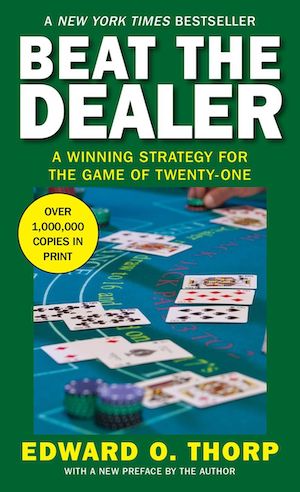
Twenty One is a game that can be played in casinos. By counting cards it is possible to significantly increase one’s odds of winning the game. The author Edward Thorp was one of the first to design a really efficient strategy for how to count cards.
This makes Thorp a good person to explain how these strategies work. He also has many interesting stories to tell about how he got to use the strategy, before casinos were prepared to deal with it. These stories inspired the movie 21.
It was an interesting read and I enjoyed learning to count cards. However, much of the book consists of the author boasting with his personal stories. I did not enjoy that part as much.
31. Fluent Forever
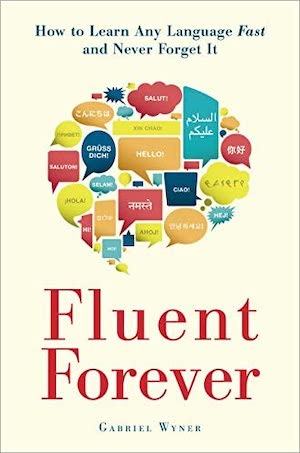
On vacation in Southern France this year, I started to (re-)learn French, and really got into it. Instead of just learning French, I also got curious about how one really learns a language well. Fluent Forever’s author is a polyglot who put a lot of effort into figuring out how to learn languages well, so this seemed like a good book to read.
His advice in the book really helped me to get a better mental model of how language learning works and how it can be designed to be more effective. Some of his suggestions are quite opinionated though, even though it felt to me like they might only work for certain types of learners.
32. How Languages Are Learned

Since Fluent Forever was largely based on one person’s personal experience, I also wanted to read a more scientific book about language learning. I picked How Languages Are Learned, a textbook about teaching languages in the classroom. The book discusses a lot of scientific studies and goes through different kinds of classroom learning.
I found it to be super interesting. However, in hindsight I went deeper into the topic than was really useful for my personal language learning journey.
33. What If?
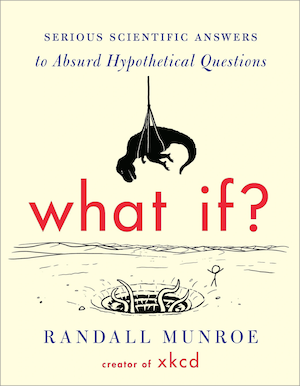
Randall Munroe, known from xkcd, wrote this book, which presents scientific answers to humorous questions. These include questions such as: What would actually happen if you swam in a nuclear fuel pool? What would it mean if everybody had exactly one soulmate somewhere in the world that they have to find by themselves?
The explanations are fun to read and the illustrations are great. It is the typical xkcd feeling of humor mixed with serious explanations. However, I think that people more into physics than me would enjoy the book even more. The questions are generally physics-related, a space that I have a limited understanding of.
34. Humble Pi
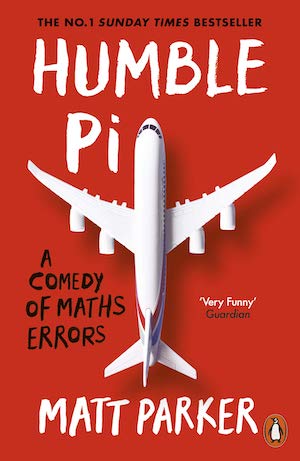
Matt Parker is a standup comedian that talks a lot about math-related topics. In Humble Pi, he analyzes mathematical errors, either common ones or historically significant ones, in a humorous way. I kept seeing the book in book stores, and, each time I saw it, I thought that I have to read the book at some point.
It was a fun read, and I am happy I did pick up the book. The writing style is great and one can really tell that Matt Parker is a standup comedian.
35. Fooled by Randomness (Incerto 1/5)
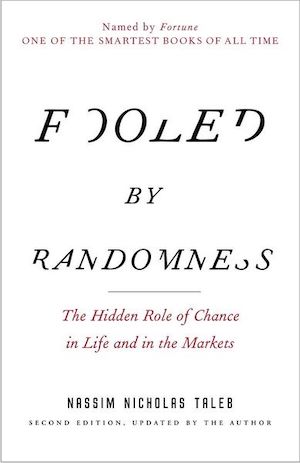
Nassim Nicholas Taleb is a statistician and essayist that used to work as an option trader. The Incerto series is his work on how humans deal with randomness and uncertainty. The series consists of five books. I had wanted to read them for a long time, and finally managed to go through all of them this year.
Fooled by Randomness discusses how bad humans are at dealing with randomness. We like to give explanations to purely random events, and have a hard time distinguishing correlation from causation.
The book is similar to Thinking, Fast and Slow, but has a more philosophical than psychological view on things. It is also more applied in the sense that it discusses the impact on real world cases rather than on psychological experiments.
36. The Black Swan (Incerto 2/5)
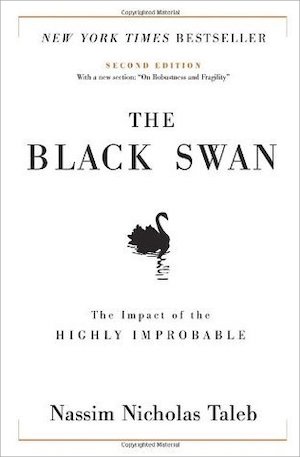
The Black Swan discusses how humans have trouble at dealing with rare events. Taleb calls these events black swans, since people for a long time thought there is no such thing as a black swan but eventually discovered this to not be true.
If something has a low probability of happening, people generally consider it as something that surely will not happen. This is particularly evident in financial cases where people’s bets work well for years only to have all their gains whipped out at once by the rare event they were betting against.
More generally speaking, people do a bad job at picking and describing distributions. In particular, people often abuse the normal distribution by modeling tons of things as normally-distributed that really are not.
I generally found the book interesting to read, and it gave me a better intuition about how statistics should be applied. However, Taleb keeps unnecessarily insulting people in the book, which makes it much harder to focus on the actual content, a general problem with his books.
37. The Bed of Procrustes (Incerto 3/5)
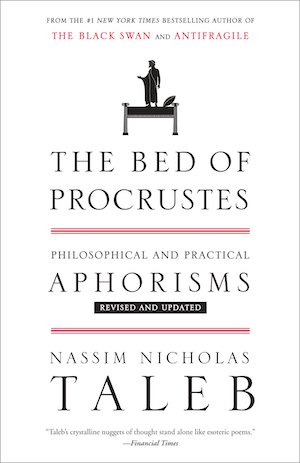
The story of Procrustes is a Greek myth in which Procrustes offers a bed to guests. He decides, however, to either stretch the guests or to cut their legs offs, just so that they perfectly fit the bed. It serves as a metaphor for the mental flaw of artificially trying to fit things into certain patterns, even when they do not really match.
In The Bed of Procrustes, Taleb discusses this and other phenomena. It is by far the shortest book of the Incerto, and written in a very different style. For me it was the hardest book to follow in this series.
38. Skin in the Game (Incerto 4/5)
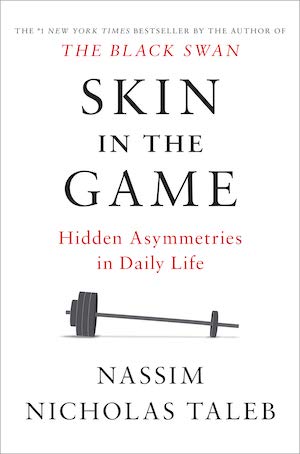
If people’s actions have no impact on them, then they have a much weaker incentive to act in good ways. Instead, we want people to have skin in the game. Good decisions should help decision makers while bad ones hurt them. This is often not the case, e.g. thinking of how politicians sometimes act, or how the incentives in various financial crises looked like.
Taleb thinks this idea through and considers all sorts of implications of it. He then analyses, in quite some detail, the places that would benefit from an incentive structure where people have skin in the game.
The fundamental idea is quite simple. However, I quite liked how far Taleb can see implications of it, and how he really analyzes the idea in detail.
39. Antifragile (Incerto 5/5)
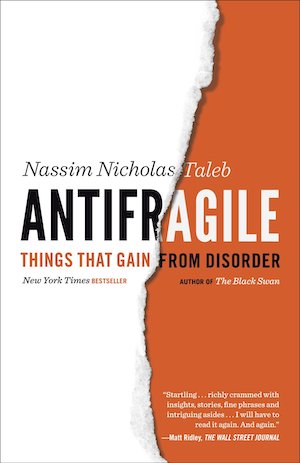
Fragile systems break if they are attacked. Perfectly robust ones are not influenced at all. Taleb proposes a third category, antifragile, as a word for systems that get better when they are attacked. This is a property you want systems to have. Taleb then analyzes this idea in detail, and, again, can explain all sorts of implications of making things antifragile.
I am quite happy that I read the Incerto books. I took away lots of things related to randomness and psychology. However, I did not enjoy the way that Taleb aggressively attacks everything and unnecessarily insults people. After having read nearly 2,000 pages of Taleb this year, I think that I have also consumed enough of such content for now.
40. 101 Essays That Will Change The Way You Think
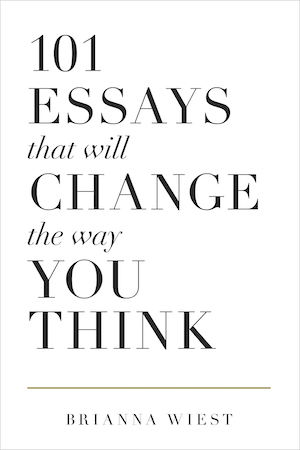
101 Essays That Will Change The Way You Think is a book consisting of self-help essays. Many of these are in listicle form.
Some of the essays were great and I took a lot away from them. With others I really struggled since they felt too crude. There is also a lot of duplicated content, which is probably because there are so many essays. I got less and less excited while reading the book, and really had to force myself to finish reading it.
41. Build: An Unorthodox Guide to Making Things Worth Making
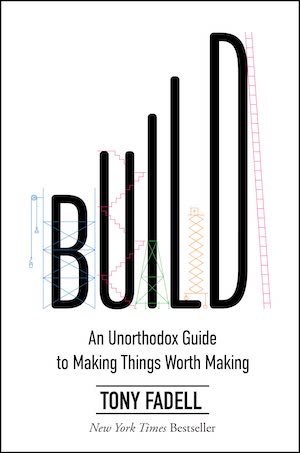
Tony Fadell invented the iPod and started Nest. In Build, he provides a guide on how to create great products and gives career advice. The book follows his personal career, and he provides advice based on each stage of his life.
Build was a great read for me, and I learned a lot of things. The book also gave me super interesting insights into how Apple and Google cultures differ, as Fadell worked at both places, and talks about both of them in the book.
42. The Power of Moments
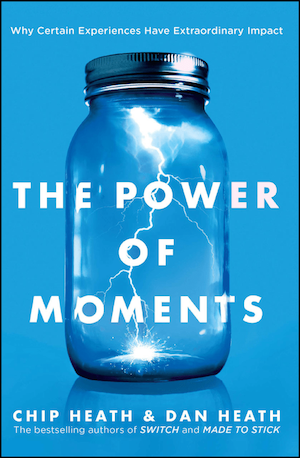
We remember some moments much better than others. The Power of Moments is pop-scientific psychology book that discusses why this is the case. Better understanding what makes such moments special makes it easier to create them. It is also just really interesting to learn about the psychology behind all of this.
I quite liked the book and it made me rethink why I still remember certain moments so well. I also love the idea that there are people researching such topics, and that we live in an age where we have easy access to detailed books about their findings.
43. CODE ☆

How do computers actually work? If you think about it, it seems like a miracle that computers can be programmed without any changes in hardware. CODE is a bottom-up explanation of how all of that works. The book starts with first fundamentals, discussing how currents flow and how they can be manipulated with switches. It then continues to build up the ideas step by step until there’s a programmable computer.
By reading the book, it feels like I got to understand a whole new world, and one that I have just taken for granted for a long time. Additionally it is worth saying that the book is just beautifully done. Everything from the prose and the print design to the visualizations is artfully created.
I should also note that I have an embarrassingly bad understanding of physics and electrical engineering. So the fact that I got to understand how all of this works, and immensely enjoyed the read, really tells you quite a lot about how great the book is.
44. Game Programming Patterns
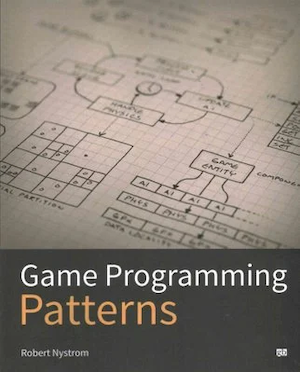
After enjoying Crafting Interpreters so much, I also wanted to read the author’s other book, Game Programming Patterns. The book discusses various design patterns in the context of developing games. Each pattern is generally described and shown in the context of games.
I do not have that much knowledge of game development so this gave me some interesting insights into that world. Additionally, the discussion of the patterns was really well done. I liked this book much more than any previous design pattern content I had read, which was usually too dry and detached from the real world.
Just like Crafting Interpreters, the book is incredibly well put together. The illustrations are beautiful and the explanations flow incredibly well.
45. The Forever Dog
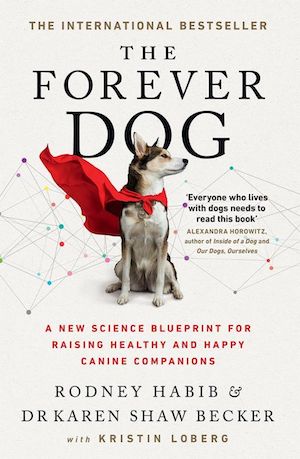
There is lots to know about how a healthy life looks like for dogs, ranging from knowledge about nutrition and exercise to more medical information. The Forever Dog is a comprehensive guide on the topic. The aim of the book is to teach people how dogs can live long and healthy lives.
This is a book I would absolutely recommend to all people that own dogs or regularly look after them. It was a great read, and I learned lots of new things. It was also a bit shocking to read about how little regulation there actually is for food that is meant to be consumed by animals. I view a lot of things differently now after learning about all of this.
46. Getting More
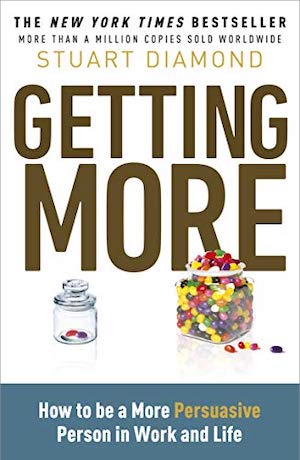
Getting More is a book about negotiation strategies. It is similar to Never Split the Difference, which I read in 2020. Getting More, however, has a stronger focus on every day situations. The book discusses how to do better in every day life, and is not as focused on formal negotiation settings like hostage or salary negotiations. Its author is a business school professor and not an ex-FBI hostage negotiator, like with Never Split the Difference.
The book is well written and a nice read. The author not only discusses the theory of negotiations but also has a huge number of entertaining stories from his life. I would summarize my takeaway from the book as: empathy is important in everything we do.
47. Androids: The Team that Built the Android Operating System
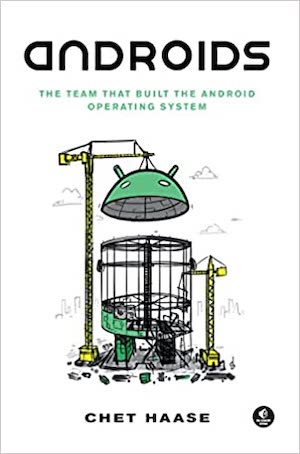
Android began as a startup that was acquired by Google in an early stage. The team then grew and the Android project expanded. Eventually, Android launched, got adopted by phone makers around the world, and turned into the world’s most used operating system.
The book Androids tells the story of how all of this came to be. It is a remarkable story since there are not many projects like Android out there — an open source system used by billions, initially funded by a single company, but yet created with a strong bottom-up culture.
For me it was super entertaining to read the book. I might be a bit biased though since I work at Google and know the names of quite a few people that appear in the book. Having read Androids just a few weeks after Build, the book also showed fascinating cultural differences between how projects happen at Google compared to Apple.
Books in German
I generally read nearly everything in English. However, there were a few books I have read in German this year. Since these books were not translated into English, I put their summaries at the end of this post.
48. Allmen und der Koi

This is a light-hearted crime novel from a popular Swiss author. A Koi gets stolen on the island of Ibiza and the main character, Allmen, is tasked with finding it. The book is not so much about unforeseeable plots and the thrill of figuring out what happened. Instead it’s a fun read in a cool setting.
49. Künstliche Intelligenz und der Sinn des Lebens
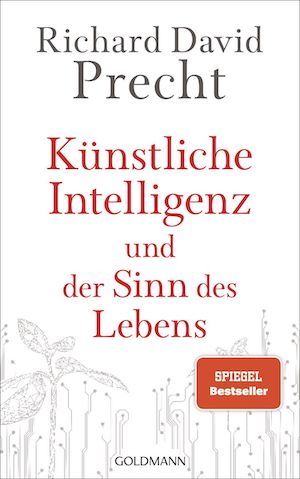
Richard David Precht is a philosopher whose book Who Am I? And If So, How Many? I enjoyed a lot last year. In this new book, he discusses the pursuit of artificial intelligence from a philosopher’s perspective — and does a remarkably bad job at that. He has little clue what he is talking about and only covers the topic superficially. However, worst of all, the ideas are just badly put together and I found it hard to follow his arguments.
50. Freedom: A Plea

This book is a plea from Joachim Gauck, Germany’s former president. Based on the counter example of the authoritarian former state of East Germany, he discusses fundamental values he believes in: freedom, democracy and tolerance. The book is really well written and an easy read.
51. Ich und der Präsident
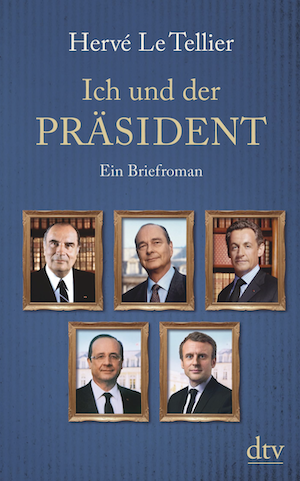
This book tells the story of a Frenchman who writes letters to various French presidents over many decades. It is written in a funny and light-hearted way. There is no major takeaway from the book, but it is amusing to read.
52. Atlas der Globalisierung

The French newspaper Le Monde published this book, which consists of various maps of the world. Each map visualizes and discusses a different topic, ranging from wealth distribution and historical conflicts to health politics across the world. The book is super interesting. However, I felt like I forgot rather quickly about the details of many issues since they are only briefly discussed.
Looking back, I am really happy that I managed to read a book a week. It took a lot of focus, and I really noticed how I e.g. barely watched any TV shows this year. In 2023, I will focus on something else, but I am really glad that I got to read so many interesting things this year.
Now that 2022 is over, I also have to say that it really took an enormous amount of work to put together this post – summarizing 52 books takes quite a while.